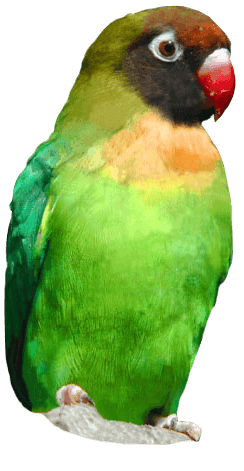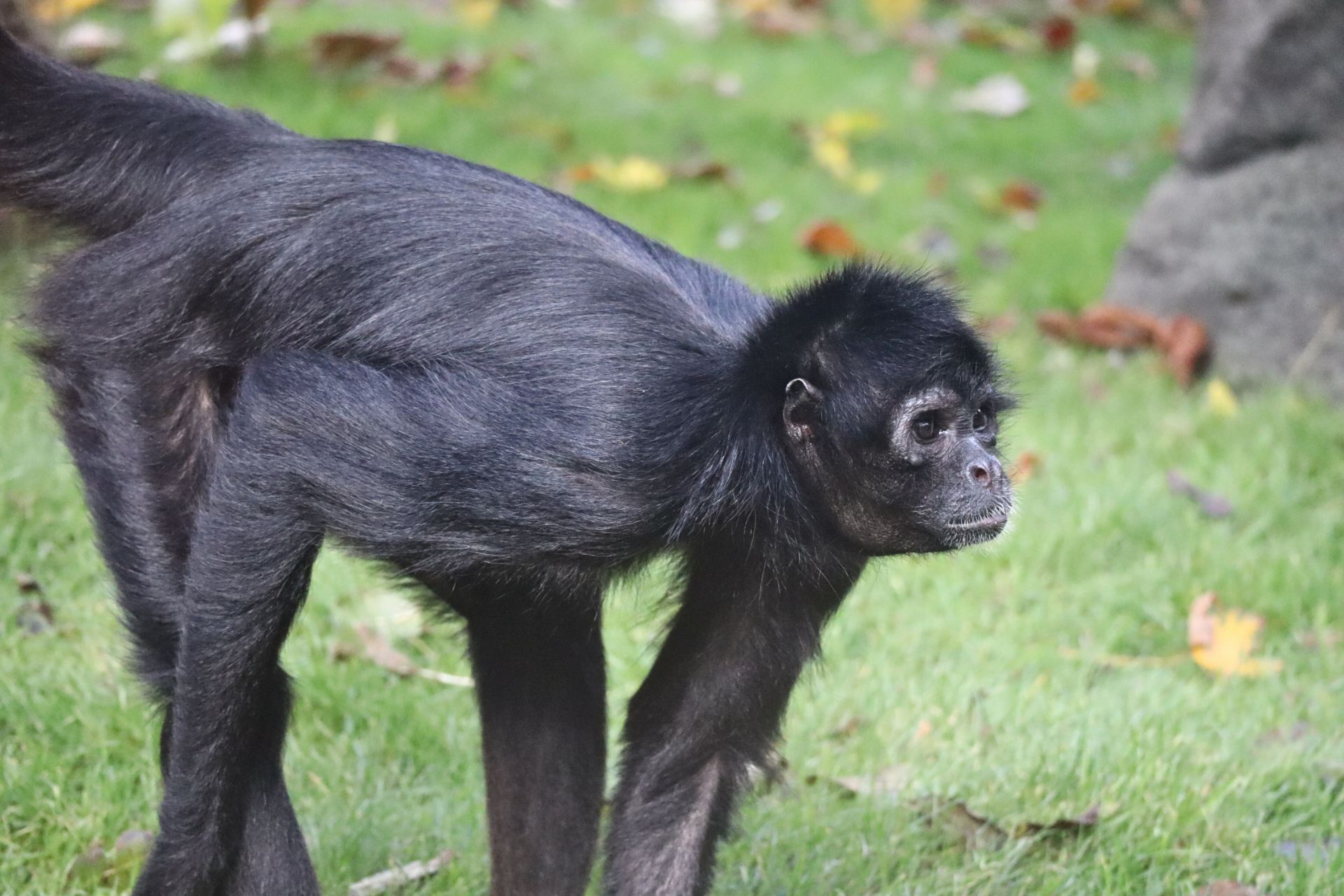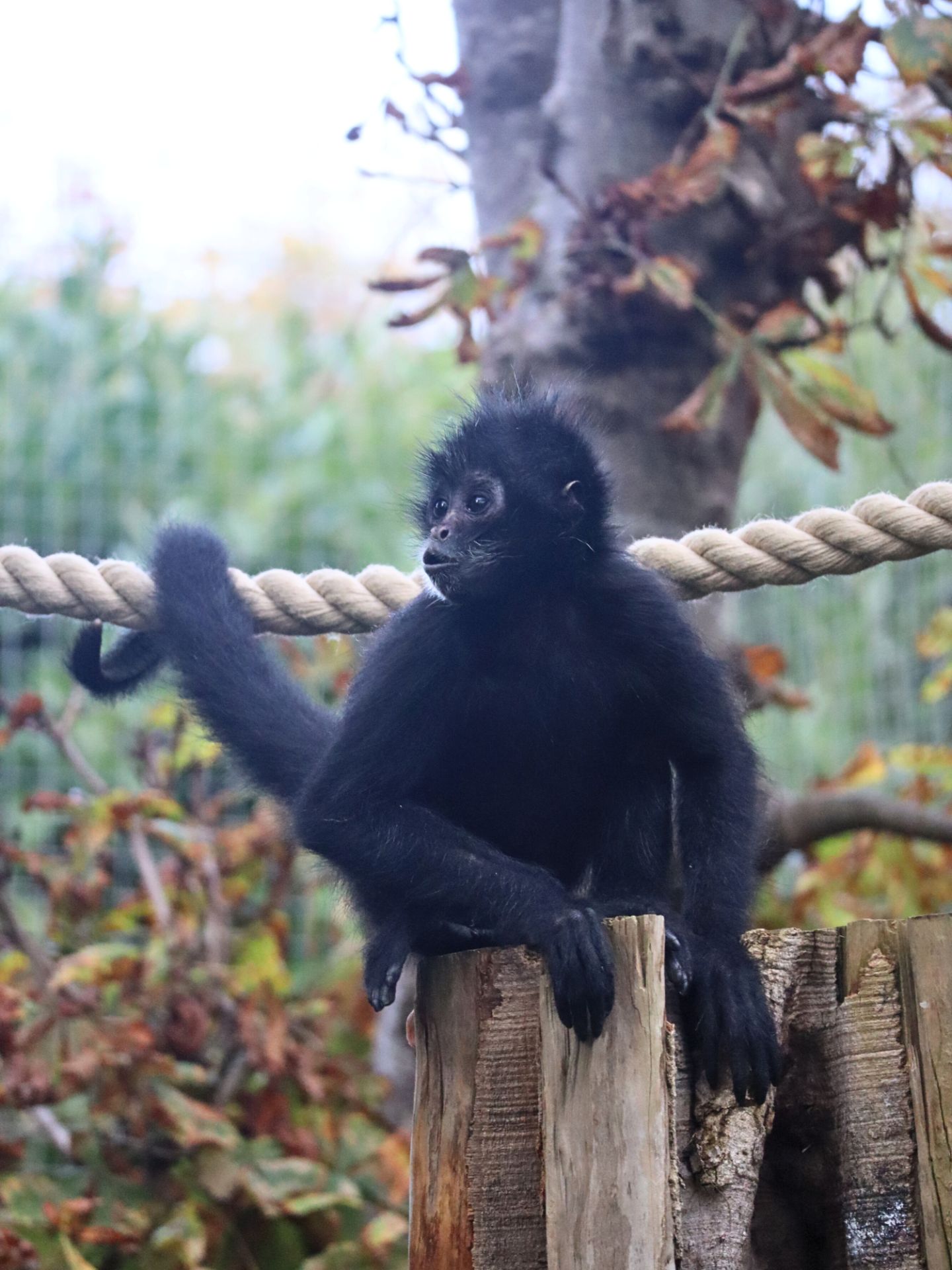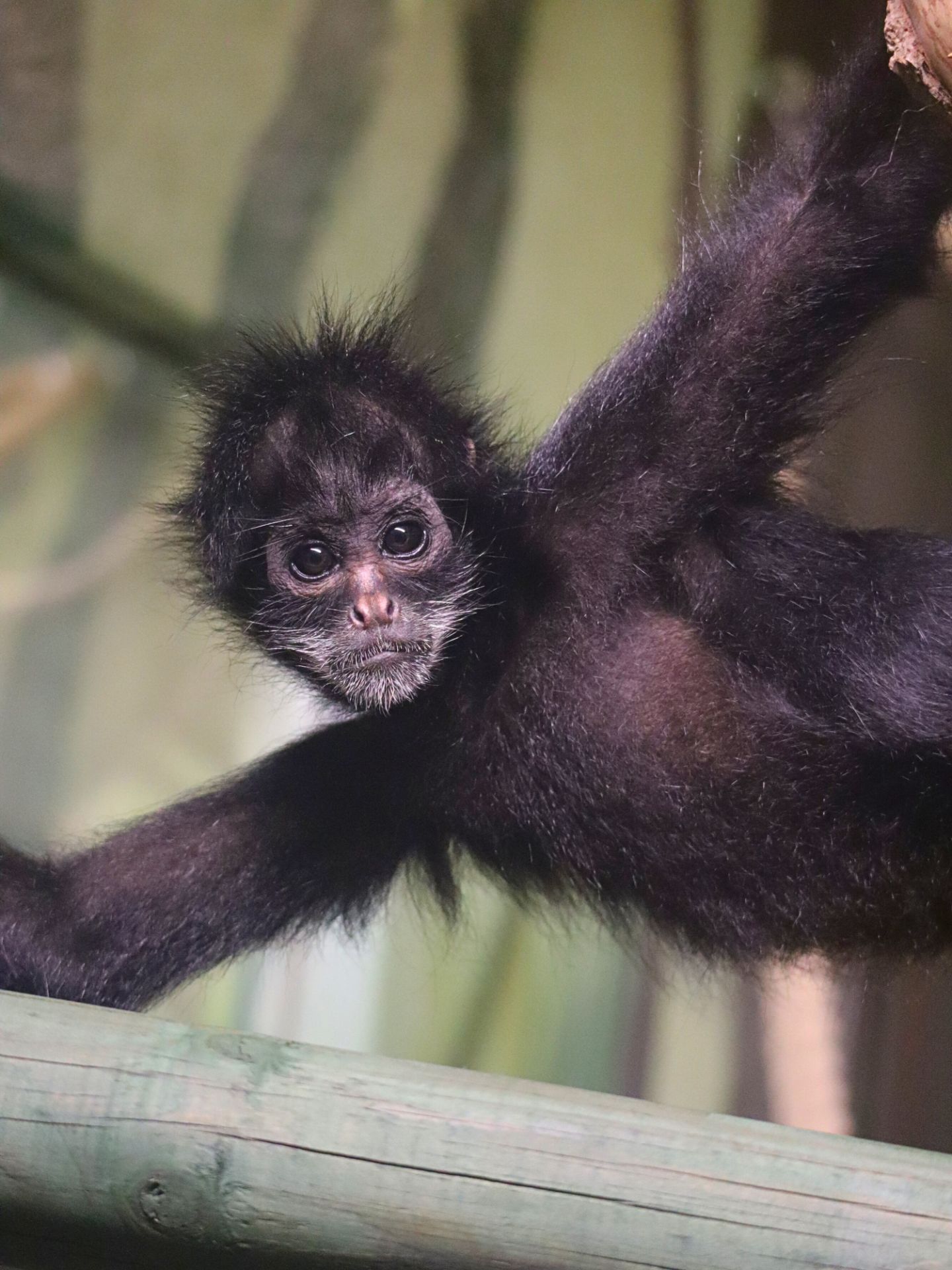
Endangered Colombian Black Spider Monkeys Swing into Drusillas
PUBLISHED 23/10/25
Drusillas is delighted to welcome a lively troop of Colombian black spider monkeys to the Park- just in time for the October half-term.
Recognisable by their glossy black coats, gangly limbs, and impressive prehensile tails, the arrival of these remarkable primates marks the return of this special species to the Sussex Zoo for the second time in its 100-year history.
The family group of 5 consists of ‘Dad’ Mo, ‘Mum’ Jamundi, two children Ernie (6) and one-year-old Dilly, plus Mo’s new mate: Moa. The five primates made the journey from Twycross Zoo in the East Midlands on Monday 20th October, after months of careful planning and preparation. Including the creation of a specially designed, immersive habitat, packed with climbing structures, natural planting, and enrichment zones to mimic their native South American rainforest habitat.

Head Keeper, Gemma Romanis, shared her excitement: "Welcoming a new animal group is always a milestone for the Park, and the spider monkeys are already proving to be full of character. They’re intelligent, social, and incredibly entertaining, we know visitors are going to fall in love with them instantly."
"It’s been a real team effort to prepare for their arrival. From habitat design and specialist diets to social dynamics and behavioural enrichment, we’ve worked closely with the team at Twycross to ensure a smooth transition and the highest standards of care."
The custom-designed habitat, built on the site of Drusillas former Lar Gibbon enclosure, features detailed rockwork that provides the monkeys with plenty of places to rest, socialise, and forage for hidden food - encouraging natural behaviours and keeping them mentally stimulated.
Lush tropical planting, including Trachycarpus palms and a variety of climbable trees with built-in divots, offers both visual interest and enrichment opportunities, helping the monkeys feel right at home. Inside, a cosy indoor area includes two spacious rooms designed for comfort and flexibility during poor weather, complete with heating, a fresh-air ventilation system, and climate-controlled airflow to ensure a comfortable environment for them all year round.

Zoo Manager, Mark Kenward shared his excitement, saying, “It’s incredibly exciting to have spider monkeys back at the Park - we haven’t had them at Drusillas since the 1980s. We’re still getting to know them and watching their personalities emerge, but it’s impossible not to fall in love with these big, gangly, and wonderfully expressive monkeys.”
“Their arrival also plays a vital role in our conservation efforts. As a vulnerable species, having a breeding group here means we can contribute to global initiatives aimed at protecting their future. ‘Dad’ Mo has already fathered two infants with his previous partner, Jamundi, and we’re hopeful he’ll welcome more little ones with his new mate, Moa.”

The curious primates have wasted no time getting to know their new surroundings and keepers have already spotted them swinging on ropes, exploring high platforms, and foraging through their first enrichment challenges. Their arrival is a significant addition to over 80 different species at the Park and brings with it an exciting opportunity to highlight the behaviour, intelligence, and conservation needs of one of the rainforest’s most acrobatic residents.
The five new monkeys belong to a species classified as 'Vulnerable' on the IUCN Red List. Native to the rainforests of Colombia in South America, these highly intelligent primates are under serious threat due to widespread deforestation, habitat fragmentation, and the illegal wildlife trade.
As their natural environments continue to disappear, zoos and accredited breeding programmes play a crucial role in safeguarding the future of species like the black spider monkeys. Providing safe, stable environments to protect genetically important populations.
Native to the tropical forests of South America, spider monkeys are known for their remarkable prehensile tails, which act as a fifth limb, allowing them to swing and balance with ease high in the canopy. They are also one of the most intelligent New World monkeys, using vocal calls, facial expressions, and physical gestures to communicate across their social groups. See if you can spot them if you’re visiting in half-term.




